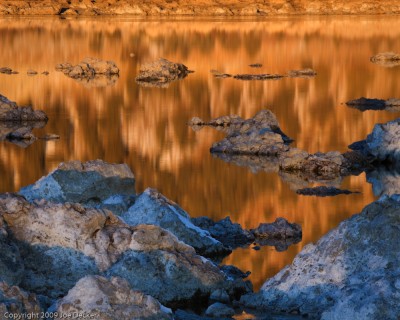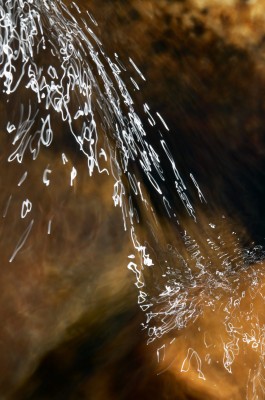Featured Member: Rick Lieder
What kind of photography do you do? I’ve been creating fine art and conceptual illustration for many years. My work has appeared on award-winning novels ranging from mysteries and science…
What kind of photography do you do? I’ve been creating fine art and conceptual illustration for many years. My work has appeared on award-winning novels ranging from mysteries and science…

The power and beauty of an exceptional sunrise or sunset is incredible. As nature photographers, it is understandable that we gravitate towards the most direct expressions of these incredible moments. Those sunrises and sunsets often offer not only incredible color in the skies, but also on the landscape itself–color that shows texture and contrast by raking across our subjects. Trying to pull in the whole picture, capturing all of this, is a wonderful goal.
Sadly, all too often, the skies don’t light up the way we expect. Or other factors get in the way of these hopes. In remaining attached to our vision of the grand scene, it is all too easy to give up and to forget what powerful alternatives can remain. Often, I find those alternatives include reflections. (more…)
(Part one of this “introduction” can be found here.)
Heading North from Redwood National Park, Highway 101 passes through the town of Klamath and continues towards Del Norte Redwoods State Park. Del Norte primarily serves campers, but the challenging Damnation Creek Trail provides a beautiful 2.5 hike to a small beach cove.
Continuing north past Del Norte Redwoods you descend towards Crescent City, California, at the south end of town (and you’ll want a map or directions) you can head east and connect with Howland Hill Road which will take you to Jedediah Smith State Park. Because Jed Smith isn’t right on Highway 101, and because Howland Hill is unpaved, this area receives less traffic than the Redwood NP/Prairie Creek Redwoods SP area to the South, making for a more relaxing and meditative photographic experience, particularly in spring or fall. (more…)

The coast redwoods (Sequoia sempervirens) of California’s north coast include the tallest trees on Earth, with several examples of individual trees over 370 feet tall and provide amazing photographic and sometimes challenging photographic opportunities. This weekend I’ll be travelling to the California’s north coast (roughly betwen the towns of Trinidad, California and Crescent City, California) to visit the constellation of four parks (Redwood National Park, Prarie Creek Redwoods State Park, Del Norte State Park, and Jedediah Smith State Park) that to my mind represent some of the finest redwoods photography opportunities available. In this article, I hope to give you a taste of those incredible areas and add a few words about the opportunities and challenges they present.
Starting from the south, Redwood National Park is the most natural place to begin our virtual tour, the National Park Service maintains a visitor center there (actually just south of Orick, CA) and in Crescent City which can provide excellent information and maps of both this park and the three state parks as well. A trip along the Newton B. Drury Scenic Parkway (which runs through Redwood NP and Prairie Creek SP) makes an excellent first introduction to the redwood environment, as the road wanders through enormous columns of tree creating a vast virtual room, carpeted with fern and trillium. The strangely-named Cal-Barrel Road (a quick turn off the parkway) offers an excellent introductory location to start your explorations. (more…)
One of the wonders of the night and twilight skies is the moon, and yet the moon can be a challenging subject to integrate into a landscape shot. There are several reasons for this, exposure problems, apparent size, depth of field, getting the moon near the horizon and subject movement all take their turns at making landscape photography with the moon a challenge. In this post, I’ll outline the different challenges in incorporating the moon into your landscape photography, and then provide some suggestions for how to work with these different limitations.
The first problem most people run into is the size problem. For a variety of reasons, we usually “see”, subjectively, the moon as larger than it is, in a pure angular sense, it’s actually quite small, perhaps half a degree in diameter. How big of a telephoto do you need to handle this? Well, if you spent over $100,000 on Canon’s biggest baddest EF lens and popped it onto a full-frame camera with a 2x teleextender, the moon would still probably barely but entirely fit in the view. That’s 2400mm of effective focal length, so if you include the moon in a 24mm image, you can guess that the moon is going to be a lot smaller (not quite 100 times smaller, but that’s not a bad guess) than the frame. If you imagine a big moon in a wide, wide landscape, you’re likely to be disappointed, the math just doesn’t work.

It was about six years back; I was very, very frustrated.
I’d set my sight on capturing a particular scene in fog, a lovely grove of second-growth redwoods, ferns, and a meandering stream in Butano State Park. The location is about a 90-minute drive, followed by a fifteen-minute hike to reach. And this was the third time I’d make the trek, and this time, as the previous two times, the fog had lifted before I arrived. For the third time, I wasn’t going to get the shot I wanted. I almost headed home in defeat, but I knew better, and I resolved to keep looking and shooting, and that has been one of the smartest decisions I’ve ever made.
Shaking off the frustration that day, I started kicking around the stream, with it’s perfect leading line heading into the redwoods. I was struck by the uniform size and dark color of the pebbles in and around the stream, and spent a good bit of time looking for some macro opportunities before noticing a larger yellow rock in the stream, with a rust-colored leaf held against the yellow rock by the flow of water. While not tremendously exciting to me, I started working out compositions in which I could place the rock and the leaf near a corner of a shot of stream bed. Handheld was out of the question, I was shooting 50-speed Velvia, and I wanted to shoot straight down, so I started the chilly work of setting up my tripod in the stream to allow me to shoot nearly straight down.
Finally set up, I got a better look through the viewfinder and saw something that almost got me to give up. The rock kicked up the flow of the stream just enough that the water downstream was sparkling with reflections of the sun. I figured those reflections would ruin my perfect little “zen garden” composition, so I experimented for ten or fifteen minutes trying to get rid of them, with a polarizer, by adjusting the position of the camera, and so on. Again, I was frustrated; again, I pushed on.
In my last two articles, I talked about how to select tripod legs and a tripod head, with that gear assembled it’s time to get out into the field and learn how to use your new tripod to best advantage.
One of the primary reasons we use tripods is stability. It is simply impossible to hold a camera steady enough for a critically sharp image as shutter speeds get longer and longer, and longer shutter speeds are often an inevitable requirement of smaller apertures and wider depth-of-field. (more…)

If it looks good, shoot it. If it looks better later, shoot it again. –Galen Rowell
So goes one of the best pieces of photographic wisdom I’ve received. It’s more than just a simple strategy, it also reflects something important about nature photography: many of the best nature photographs feature ephemeral light. Whether dramatic (like sunsets or rainbows), or subtle (like the play of light and shadow across the landscape on a partly-cloudy day), the best light is often short-lived and unpredictable. (more…)
In my last post, I talked about how much I enjoy shooting in “bad” weather. In this post, I continue by explaining how to keep you and your gear warm and happy when you do.